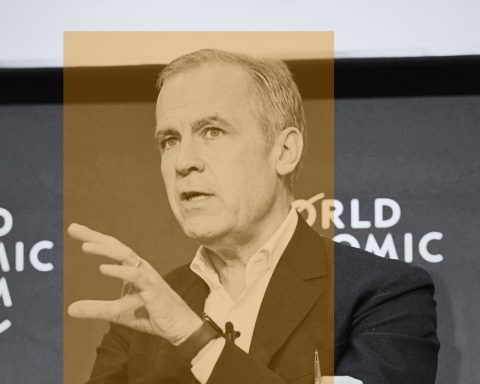Against a backdrop of anxiety about the relevance of the COP29 climate conference in Baku, Azerbaijan, plus the unveiling of president-elect Donald Trump’s climate-hostile cabinet, a group of Canadian family foundations has pledged $405 million to fight global warming.
The initiative, a partnership between veterans of Canada’s climate fight and relative newcomers, raises the ante, with deep-pocketed foundations and wealthy individuals stepping into the limelight to demonstrate their willingness to spend large sums at a time when many governments seem to be retreating from climate policies.
Two prominent foundations – the Trottier Family Foundation and the Peter Gilgan Foundation – contributed $250 million, with the balance coming from smaller and newer funds, including one set up by direct-air-capture pioneer David Keith, a University of Chicago physicist who last year sold his start-up, Carbon Engineering, to Texas-based Occidental for US$1.1 billion. The Ivey Foundation also recommitted an earlier pledge of $100 million.
According to a press release, “the new commitments were made through the Climate Champions initiative, coordinated by Clean Economy Fund, which has the goal of tripling climate philanthropy in Canada from roughly $100 million to more than $300 million per year by 2030.” The Clean Economy Fund released data in September indicating that Canadian climate donations – $106 million in 2022 – represent less than 1% of all giving.
The committed funds will be allocated by the individual foundations, according to their own philanthropic programs, which may direct grants to advocacy, technology, policy-making or other initiatives, Eric St-Pierre says in an interview. St-Pierre is the executive director of the Trottier Family Foundation, which has long been active in climate philanthropy. “I would say this $405 million is first a pledge, it’s a commitment, and it’s basically a call to action.”
The target audience for this appeal, however, is definitely not mass-market. For the past two years, according to St-Pierre, officials from Trottier and a few other climate philanthropies have been quietly meeting with high-net-worth individuals and families, sounding them out on committing donations to some aspect of the fight against climate change.
This outreach campaign has sought to help smaller foundations figure out how to dip their toes in a space that can involve a good deal of technical complexity, as well as uncertainty as to the effectiveness of those donations. In many cases, wealthy families will set up family foundations with very specific philanthropic goals – healthcare, humanitarian relief, culture, scholarships, et cetera. “We’ve been sitting down for coffee, trying to explain the work that we do, trying to answer questions, trying to bring them along,” St-Pierre says.
An evolving approach to climate philanthropy
Historically, a large chunk of climate-adjacent philanthropy has gone toward conservancy organizations that buy ecologically sensitive land and establish anti-development easements that will protect those tracts in perpetuity. These gifts are also eligible for various types of tax exemptions.
Advocacy groups that target mainly individuals for support have been the other long-standing fixture of climate philanthropy, with donations underwriting lobbying, legal challenges and public action campaigns.
More recently, some foundations have invested in both advocacy and impact funding, meaning investments in either not-for-profit or for-profit revenue-generating activities, or technology start-ups, that may bring some kind of environmental benefit as well as a return on investment. But even climate-focused foundations acknowledge it will take trillions of dollars in private capital to transform and decarbonize massive sectors like energy, transportation and building materials.
Some climate philanthropists now position their role as catalysts pursuing a “theory of change,” with funding that underwrites or supports emerging economic activity, such as electric vehicle supply chains or green steel. “One of the fundamental ways in which we observe and measure this effect is in the unleashing of capital,” observed Eric Campbell, executive director of the Clean Economy Fund, in a recent blog post. “Like the small-sized domino, well-targeted and well-timed philanthropic capital can unlock much greater amounts of public and private capital.”
St-Pierre says that some climate foundations have explored the idea of establishing a pooled climate fund, to which smaller and less experienced, or less well-resourced, family foundations could contribute. “We had looked at that initially, and we’re keeping that option on the table,” he says. “There might be some foundations that might not want to make the decision on where to allocate to specific funders.”
For the time being, the foundations that signed on to today’s commitment will be able to coordinate some of their giving through the Climate Champions initiative, which is a program by the Clean Economy Fund.
Given the broad political swing to the right, and the Trump administration’s signalling that it will pull the United States out of the Paris Agreement, it might seem as if such efforts, even well-financed ones, are destined to hit a wall. But St-Pierre says he remains optimistic, noting the precipitous fall in solar and wind prices, as well as the dramatic take-up of EVs in China.
He also points out that when he talks to wealthy families, he no longer has to spend much time convincing them of the issue. “They get it. They’ve seen Jasper burn down, or they’ve witnessed smoke through their communities, and they’re probably physically feeling the effects of flooded basements. There’s no need to convince people of the gravity of climate change.”
Disclosure: John Lorinc has been retained independently by the Ivey Foundation to write a report on their efforts to wind down their granting operations.
John Lorinc is a Toronto journalist, author and editor. He writes about cities, climate and cleantech.







